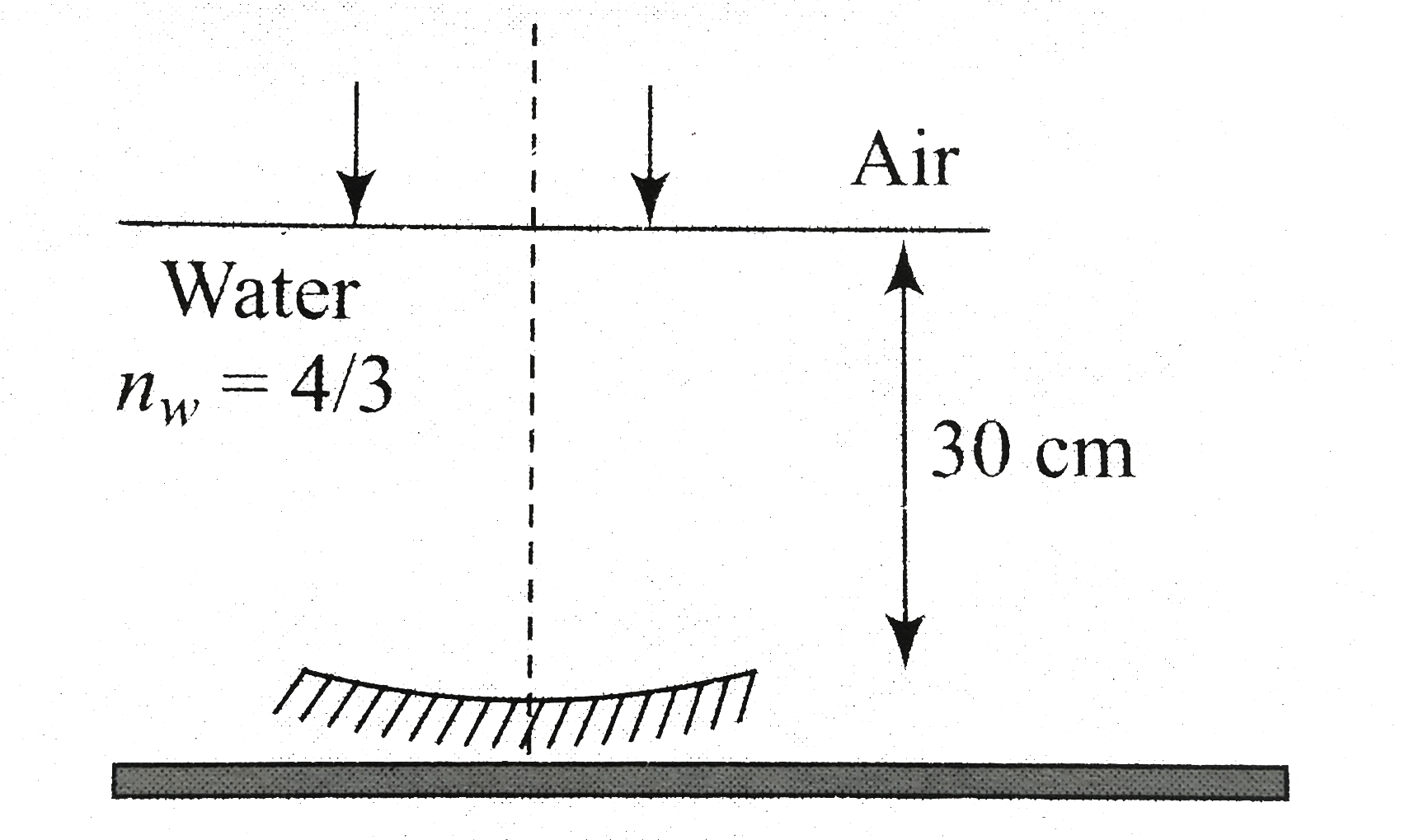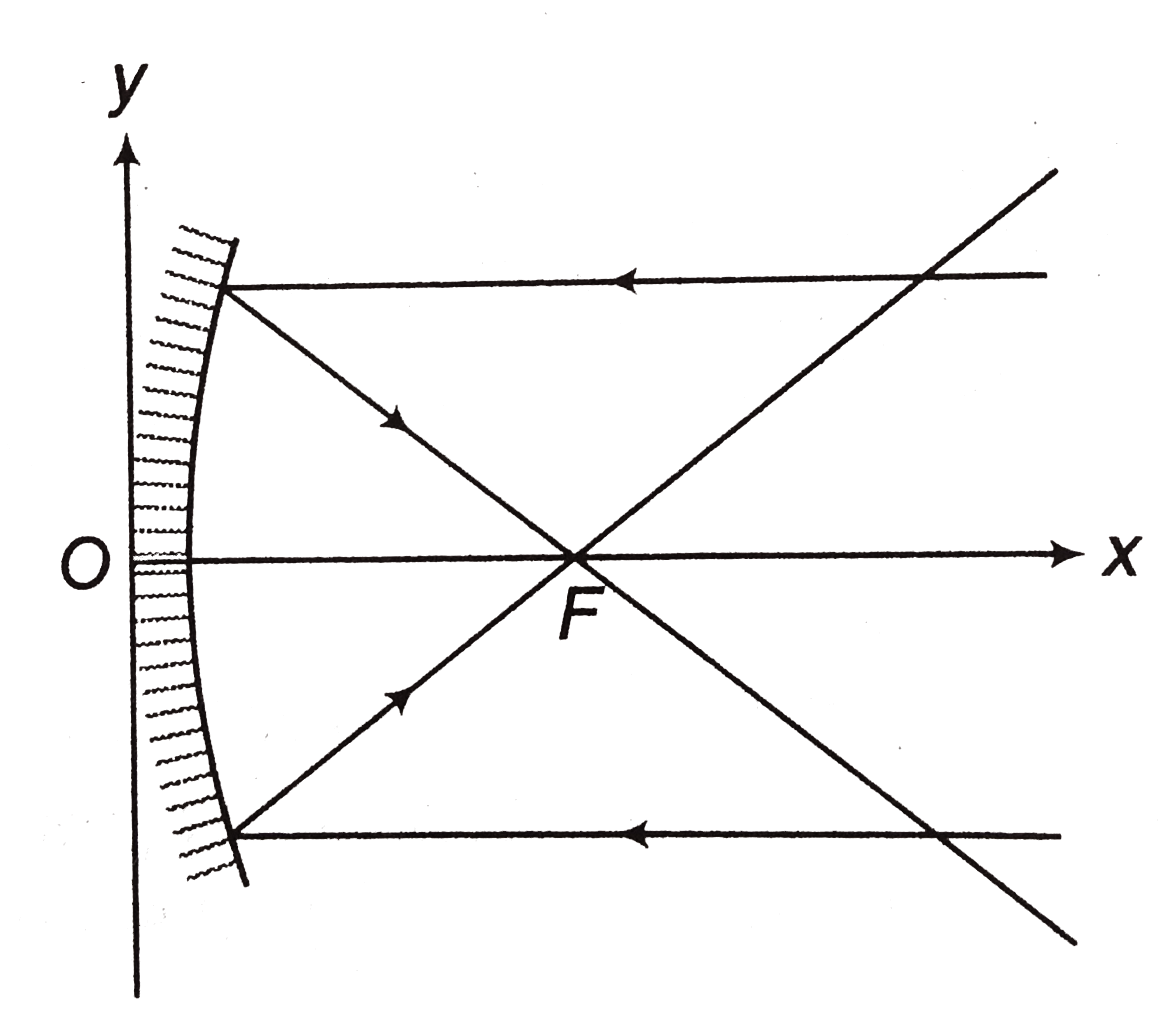A parallel beam of light, parallel to the principal axis of a concave mirror, on reflection meets at the :
To solve the question, we need to understand the behavior of light rays when they interact with a concave mirror. Here's a step-by-step solution:
1. Identify the Concave Mirror:
- A concave mirror is a spherical mirror that curves inward. It has a principal axis, which is an imaginary line that runs through the center of the mirror.
2. Understanding Parallel Rays:
- When we talk about a parallel beam of light, we mean that the rays of light are coming in parallel to the principal axis of the mirror.
3. Reflection of Light Rays:
- According to the laws of reflection, when parallel rays of light strike a concave mirror, they will reflect off the surface of the mirror.
4. Meeting Point of Reflected Rays:
- After reflection, these parallel rays will converge (meet) at a specific point. This point is determined by the geometry of the mirror.
5. Identifying the Focus:
- The point where the reflected rays converge is known as the focus of the concave mirror. The focus is located along the principal axis, and it is a crucial point in optics.
6. Conclusion:
- Therefore, the answer to the question is that the parallel beam of light, after reflection from a concave mirror, meets at the focus.
Final Answer:
The parallel beam of light, parallel to the principal axis of a concave mirror, on reflection meets at the focus.
---
- A concave mirror is a spherical mirror that curves inward. It has a principal axis, which is an imaginary line that runs through the center of the mirror.
- When we talk about a parallel beam of light, we mean that the rays of light are coming in parallel to the principal axis of the mirror.
- According to the laws of reflection, when parallel rays of light strike a concave mirror, they will reflect off the surface of the mirror.
- After reflection, these parallel rays will converge (meet) at a specific point. This point is determined by the geometry of the mirror.
- The point where the reflected rays converge is known as the focus of the concave mirror. The focus is located along the principal axis, and it is a crucial point in optics.
- Therefore, the answer to the question is that the parallel beam of light, after reflection from a concave mirror, meets at the focus.
The parallel beam of light, parallel to the principal axis of a concave mirror, on reflection meets at the focus.
Topper's Solved these Questions
- LIGHT ENERGYBook:ICSEChapter:LIGHT ENERGYExercise:EXERCISE 5.2 (Objective Type Questions) E. Match the statements in column A, with those in Column B.
Explore 1 Video
- LIGHT ENERGYBook:ICSEChapter:LIGHT ENERGYExercise:EXERCISE 5.2 (STUDY QUESTIONS)
Explore 4 Videos
- LIGHT ENERGYBook:ICSEChapter:LIGHT ENERGYExercise:EXERCISE 5.2 (Objective Type Questions) C. Write .true.of .false. for the following statements :
Explore 5 Videos
- HEAT TRANSFER Book:ICSEChapter:HEAT TRANSFER Exercise:Picture Study
Explore 2 Videos
- MATTER Book:ICSEChapter:MATTER Exercise:THEME ASSIGNMENT
Explore 25 Videos
Similar Questions
Knowledge Check
An object is kept on the principal axis of a concave mirror of focal length 10cm, at a distance of 15 cm from its pole. The image formed by the mirror is:
AVirtual and magnifiedBVirtual and diminishedCReal and magnifiedDReal and diminished
The point of the principal axis, when a beam of light travelling parallel to the principal axis, after reflection actually meets is called the ____ of concave mirror.
View SolutionA light ray travelling parallel to the principal axis of a convex lens of focal length 12 cm strikes the lens at a height of 5 mm from the principal axis. What is the angle of deviation produced?
View SolutionA concave mirror of focal length 20cm is placed inside water with its shining surface upwards and principla axis vertical as shown in Fig. Rays are incident parallel to the principa, axis of concave mirror. Find the position of final image.

View SolutionShow that a parallel bundle of light rays parallel to the x-axis and incident on a parabolis reflecting surface given by x=2by2, will pass through a single point called focus of the reflecting surface. Also, find the focal length.

View SolutionA small object is placed on the principal axis of concave spherical mirror of radius 20cm at a distance of 30cm. By how much will the position of the image alter only after mirror, when a parallel-sided slab of glass of thickness 6cm and refractive index 1.5 is introduced between the centre of curvature and the object? The parallel sides are perpendicular to the principal axis.
View SolutionA point object is moving on the principal axis of a concave mirror of focal length 24cm towards the mirror. When it is at a distance of 60cm from the mirror, its velocity is . 9sec/cm What is the velocity of the image at that instant
View SolutionA parallel beam of light is incident on a converging lens parallel to its principal axis. As one moves away from the les on the other side on its principal axis, the intensity of light
View Solution